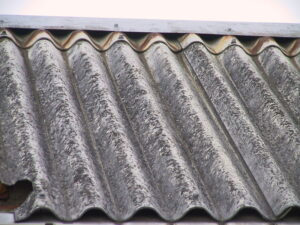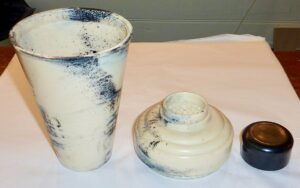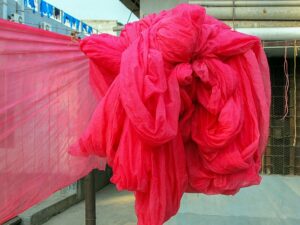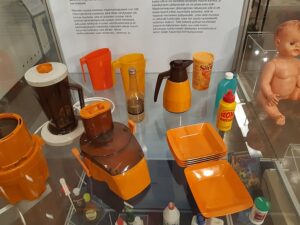In this article “Thermal insulation examples” will be discuss with its related several facts. Thermal insulation examples are not suitable for transferring the heat from one circumstance to another circumstance.
13+ Thermal Insulation Examples with several facts are listed below,
Thermal insulation examples:-
In our surroundings lots of insulators are present in solid state. The examples solid state insulators are,
Glass:-
- The solid insulator example is glass. From the definition of thermal insulation we can get an idea that the heat cannot from one space to another space. The electrons which are present in the glass not able to carry heat just because of the electrons are participating chemical bonds for this reason the electrons are could not get free time to conducting heat and heat cannot flow from circumference to another circumference.
- Ordinary glass is appropriate example of solid thermal insulator just one problem with the glass is it is brittle.
- Dielectric constant in nature.
- Glass has very less temperature coefficient.

Image Credit – pixabay
Asbestos:-
- The solid insulator example is Asbestos. The electrons which are present in the asbestos not able to carry heat just because of the electrons are participating chemical bonds for this reason the electrons are could not get free time to conducting heat and heat cannot flow from circumference to another circumference.
- Not brittle
- Resistance to heat
- Resistance to wear
- Flexible
- High strength

Image Credit – Wikimedia Commons
Bakelite:-
- Bakelite is heat proof.
- Bakelite material is acid proof.
- Bakelite is a material which is very strong in mechanically.
- Bakelite is a polymer which made with monomers of formaldehyde and phenol.
- Another solid insulator example is Bakelite. The electrons which are present in the Bakelite not able to carry heat just because of the electrons are participating chemical bonds for this reason the electrons are could not get free time to conducting heat and heat cannot flow from circumference to another circumference.

Mica:-
- Highly reflective.
- Flexible
- Another example of thermal insulator is Mica. The electrons which are present in the mica not able to carry heat just because of the electrons are participating chemical bonds for this reason the electrons are could not get free time to conducting heat and heat cannot flow from circumference to another circumference.
- Low thermal conductivity.
- Mica affected by oil.
- Mica is rigid.
- In high temperature mechanically the mica became week.
- High dielectric strength is about 30 kV/mm.
Rubber:-
- Rubber is the insulator of thermal example. The electrons which are present in the rubber not able to carry heat just because of the electrons are participating chemical bonds for this reason the electrons are could not get free time to conducting heat and heat cannot flow from circumference to another circumference.
- Rubber has tensile strength.
- Tear resistance
- Elongation
- Abrasion resistance
- Specific gravity
- Tensile modulus
- Hardness
Paper:-
- The electrical property of the paper is adequately good.
- Paper is made from wood pulp after that manila fibers are beaten and finally rolled into sheets.
- Another solid insulator example is Paper. The electrons which are present in the paper not able to carry heat just because of the electrons are participating chemical bonds for this reason the electrons are could not get free time to conducting heat and heat cannot flow from circumference to another circumference.
- Papers have dielectric strength near about 4 to 10 kV/mm.
- Hygroscopic
- The application of paper is wallpaper, filter paper, writing, toilet tissue, security paper and laminated worktops.
Silk or cotton:-
- Elasticity
- Light weight
- Easy to use
- Initial cost is low
- Available
- Silk or cottons have dielectric strength
- Thermal insulator another example is Silk or cotton. The electrons which are present in the silk or cottons not able to carry heat just because of the electrons are participating chemical bonds for this reason the electrons are could not get free time to conducting heat and heat cannot flow from circumference to another circumference.
- Silk or cottons can be used in various ways such as cooking oils, making of clothes, towels, sheets, currency paper, animal feed biofuels and many more.

Image Credit – Wikimedia Commons
Ceramics:-
- Ceramics materials are brittle type
- Hard
- Nonmagnetic
- Another solid insulator example is Ceramics. The electrons which are present in the ceramics not able to carry heat just because of the electrons are participating chemical bonds for this reason the electrons are could not get free time to conducting heat and heat cannot flow from circumference to another circumference.
- Oxidation resistant
- Prone to thermal shock
- Ceramics are both thermal insulator and electrical insulator
- Ceramics uses in cutting tools, in space industry.
- Ceramics works as both thermal insulator and electrical insulator.
Dry air:-
- Dry air is thermal insulator. The electrons which are present in the Bakelite not able to carry heat just because of the electrons are participating chemical bonds for this reason the electrons are could not get free time to conducting heat and heat cannot flow from circumference to another circumference.
- Dry air not easily affected by heat
- Exerts pressure
- Can be compressed
- Affected by altitude
- Economical
- Eco friendly
- Light weight
- Easy to use
- Initial cost is low
- Available
Wood:-
- Wood has good amount of strength.
- Wood is another example for thermal insulator. The electrons which are present in the wood not able to carry heat just because of the electrons are participating chemical bonds for this reason the electrons are could not get free time to conducting heat and heat cannot flow from circumference to another circumference.
- Wood has both two characteristics such as tension and compression
- Rigid
- Relatively light weight
- Easy to install
- Economical
- Eco friendly
- Any type of size and shape can be given to wood.
- Wood can be used in various fields such as packing, weapons, tools, paper, artwork, constructions and many more.
Diamond:-
- Diamond is not brittle type
- Another example is Diamond of thermal insulator. The electrons which are present in the diamond not able to carry heat just because of the electrons are participating chemical bonds for this reason the electrons are could not get free time to conducting heat and heat cannot flow from circumference to another circumference.
- Diamonds have thermal conductivity
- Combustibility
- Compressive strength
- Tear resistance
Plastic:-
- Plastic is water resistant
- Plastic is shock resistant
- Another example is plastic of thermal insulator, the electrons which are present in the plastic not able to carry heat just because of the electrons are participating chemical bonds for this reason the electrons are could not get free time to conducting heat and heat cannot flow from circumference to another circumference.
- Light weight
- Easy to install
- Maintenance cost in very minimal
- Easy to give size and shape
- Combustibility
- Compressive strength
- Recyclable

Styrofoam:-
- Styrofoam is another example of thermal insulator. Thermal insulator material means from where heat cannot flow one area to another area among them Styrofoam is. The electrons of the Styrofoam could not carry electrons just because of the electrons which are present in the Styrofoam they are engage to make chemical bonds to each other for this reasons the electrons are not free to take part in the conduction of heat, for this reason heat could not flow through Styrofoam material.
Hi..I am Indrani Banerjee. I completed my bachelor’s degree in mechanical engineering. I am an enthusiastic person and I am a person who is positive about every aspect of life. I like to read Books and listen to music.